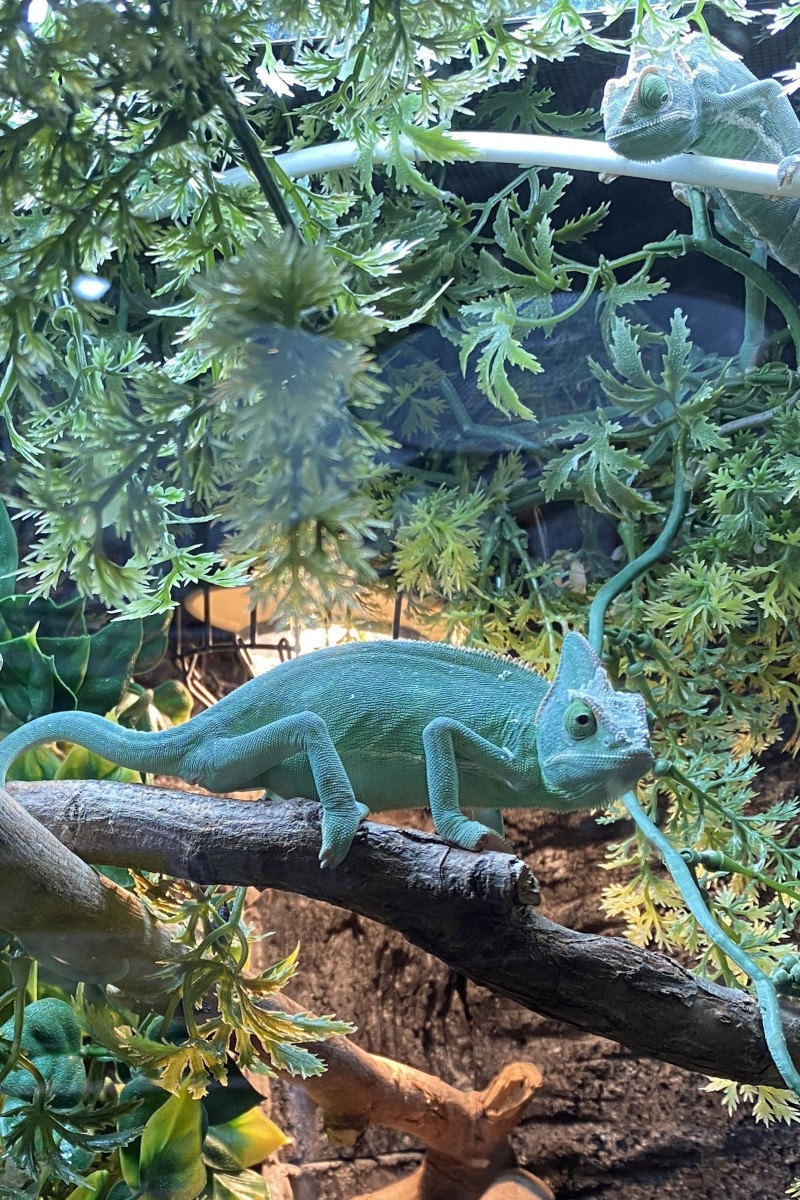
Study Buddy (Challenger): How Hong Kong’s reptile trade threatens biodiversity
This page is for students who want to take their reading comprehension to the next level with difficult vocabulary and questions to test their inference skills.
 Explore the impact of invasive species on Hong Kong’s biodiversity and the role of positive lists. Photo: Jelly Tse
Explore the impact of invasive species on Hong Kong’s biodiversity and the role of positive lists. Photo: Jelly TseContent provided by British Council
Read the following text, and answer questions 1-9 below:
[1] Invasive alien or non-native species are a major driver of biodiversity loss. It has been estimated to be one reason millions of species of plants and animals are currently at risk of extinction. The UN’s Intergovernmental Science-Policy Platform on Biodiversity and Ecosystem Services recently released a report saying over 3,500 invasive species have had a significant negative impact on indigenous species and ecosystems.
[2] The trade database of the Convention on International Trade in Endangered Species shows that Hong Kong imported over 5.7 million live reptiles between 2000 and 2022. During this period, many other types of animals were also imported as pets or for other purposes. In fact, the city is a global hub for the reptile trade.
[3] One commonly imported turtle, the red-eared slider, is listed in the International Union for Conservation of Nature’s “100 of the World’s Worst Invasive Species”. This inexpensive turtle is widely available in pet shops across Hong Kong. Many find their way to our waterways, where they compete for resources with native turtles, many of which are at risk of extinction.
[4] Currently, the Agriculture, Fisheries and Conservation Department inspects country parks and sites of special scientific interest to monitor invasive alien species. When such species are found, they can be removed or eradicated. However, some, such as the red fire ant and Mikania climbers, persist and make this task difficult and ineffective.
[5] According to a joint public survey by WWF-Hong Kong and ADM Capital Foundation conducted in 2022, many have grave concerns about the impact of the pet trade. About 80 per cent of respondents supported introducing a ban on the trade of non-native pet species that are invasive, dangerous or difficult to care for.
[6] Proactive regulatory measures can be an effective tool to counter the problems caused by invasive species imported by pet traders. Some forward-thinking nations now regulate their wildlife trade through the preparation of positive lists. These lists only permit the trade of species identified as suitable for keeping as pets, which helps safeguard biodiversity, enhances animal welfare and protects human health and safety.
[7] There is an urgent need to protect Hong Kong’s biodiversity and conserve the world’s threatened species. Imposing restrictions and formulating a positive list of wildlife species which can be imported and traded should be made a priority. Aside from supporting biodiversity conservation, these actions can lessen the likelihood of invasive alien species and zoonotic disease outbreaks. This is in line with China’s biosecurity law, which came into effect in April.
[8] Under the new law, a national entrance approval system for fauna and flora imported into China will be established for the first time. It will help prevent new invasive species and wildlife-borne infectious diseases, protecting people’s health, the environment and national biosecurity. As a significant trading hub for wildlife and a part of China, Hong Kong should set up a similar system to control imported animals and stop the spread of invasive species.
Source: South China Morning Post, September 9
Questions
1. How severe is the impact of invasive species on biodiversity according to paragraph 1?
_____________________________________________________________________________________________________
2. According to paragraph 1, the impact of invasive alien species on native biodiversity is ...
A. positive.
B. negative.
C. neutral.
D. undetermined.
3. Based on your understanding of paragraph 3, what happens to many red-eared sliders after they are purchased as pets?______________________________________________________________________________________________________
4. In paragraph 4, how successful has the Agriculture, Fisheries and Conservation Department been in eliminating invasive species in the city, and why?
______________________________________________________________________________________________________
5. What are most of the survey respondents mentioned in paragraph 5 in favour of doing?
_____________________________________________________________________________________________________
6. In paragraph 6, positive lists help safeguard biodiversity by ...
A. encouraging the trade of endangered species.
B. promoting the breeding of exotic animals.
C. limiting the introduction of invasive species.
D. all of the above
7. Find a phrase in paragraph 7 that refers to “illnesses that originate in animals that spread to humans on a huge scale”. ___________________________________________________
8. How does the new law mentioned in paragraph 8 address the issue of invasive species?
______________________________________________________________________________________________________
9. Which of the following best describes the writer’s tone when addressing alien species invasions in Hong Kong?
A. pessimistic
B. dismissive
C. concerned
D. indifferent
Answers
1. They are estimated to be one reason millions of species of plants and animals are currently at risk of extinction.
2. B
3. They are abandoned in waterways where they compete for resources with native turtles.
4. It has been somewhat successful because they were able to remove some species, but others, such as the red fire ant and Mikania climbers, still persist. (accept all similar answers)
5. They are in favour of introducing a ban on the trade of non-native pet species that are invasive, dangerous or difficult to care for.
6. C
7. zoonotic disease outbreaks
8. By establishing a national entrance approval system, the law helps prevent the introduction of new invasive species that could pose risks to both native biodiversity and human health. (accept all similar answers)
9. C
